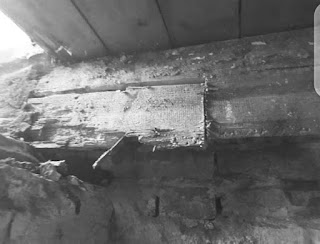Water Proofing
During the construction of the building and after
the completion of the building, water enters different parts of the building
from different sources which is called dampness. This dampness affects the
beauty of the building and makes the building work longer. Various measures are
taken to protect the building from the harmful effects of dampness which is
called water proofing.
 |
| Sources Of Dampness In Building |
Sources Of Dampness In
Building
The following are the sources of dampness entering
the building.
1.
Climatic Causes
2.
Structural Causes
Climatic Causes
The building enters dampness from various natural
sources, the details of which are as follows.
·
When it rains, water reaches different
parts of the building which takes the form of dampness.
·
Usually on rainy days the groundwater
level rises considerably which causes the foundation of the building and other
lower parts to be affected by dampness.
·
An increase in air pressure causes dampness
in the air to take the form of water, which damages the roof, floor and walls
of the building. This condition occurs in severe cold weather.
·
Rainwater accumulates under the building
built in low lying areas and damages the building.
·
Due to the poor alignment of the
building, some walls are more affected by rain because these walls are more
exposed to rain and do not get much sunlight.
Structural Causes
The water used during the construction of the
building damages the buildings and also the building is damaged due to poor constructions
which are described below.
·
Adequate water is used during the
construction of the building because the walls of the building and other parts
of the building remain wet for a long time and the salts present in it are
damaged. If the walls and other parts of the building are plastered and painted
before the water dries, then the water present in these parts of the building
damages the building.
·
Poor construction of the building also
causes dampness to enter the building. Poor construction includes
non-compliance with DPC standards and incorrect roof and wall joints. It also
involves not connecting the water supply and sewerage pipes properly. For these
reasons, dampness enters different parts of the building.
·
The building enters the building due to
the use of faulty materials in the construction, for example, if second class
bricks are used or the amount of cement used in concrete is less, the building
will absorb dampness from the constructed atmosphere. Also on rainy days it
will absorb more rain water. This reduces the age of the building.
 |
| Sources Of Dampness In Building |
Bad Effects Of Dampness:
·
Dampness can cause the following damage
to the building.
·
The iron used in building construction
rusts.
·
Dampness causes the plaster to crumble.
·
The joints between the different layers
of the floor are finished.
·
Dampness spoils the whiteness and
painted.
·
Bricks and stones cause salts to
accumulate on the masonry surface, causing the surface to deteriorate.
 |
| Sources Of Dampness In Building |
·
The wood used in the building starts to
rot due to dampness.
·
Damage to pipes and other equipment used
for electrical installations and other facilities due to dampness.
·
Dampness causes germs in the building
which has a detrimental effect on the health of the occupants of the building.
10 CIVIL ENGINEERING BASIC INTERVIEW QUESTIONS AND ANSWERS



0 Comments